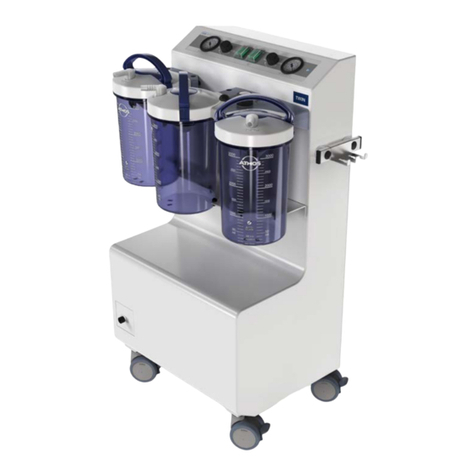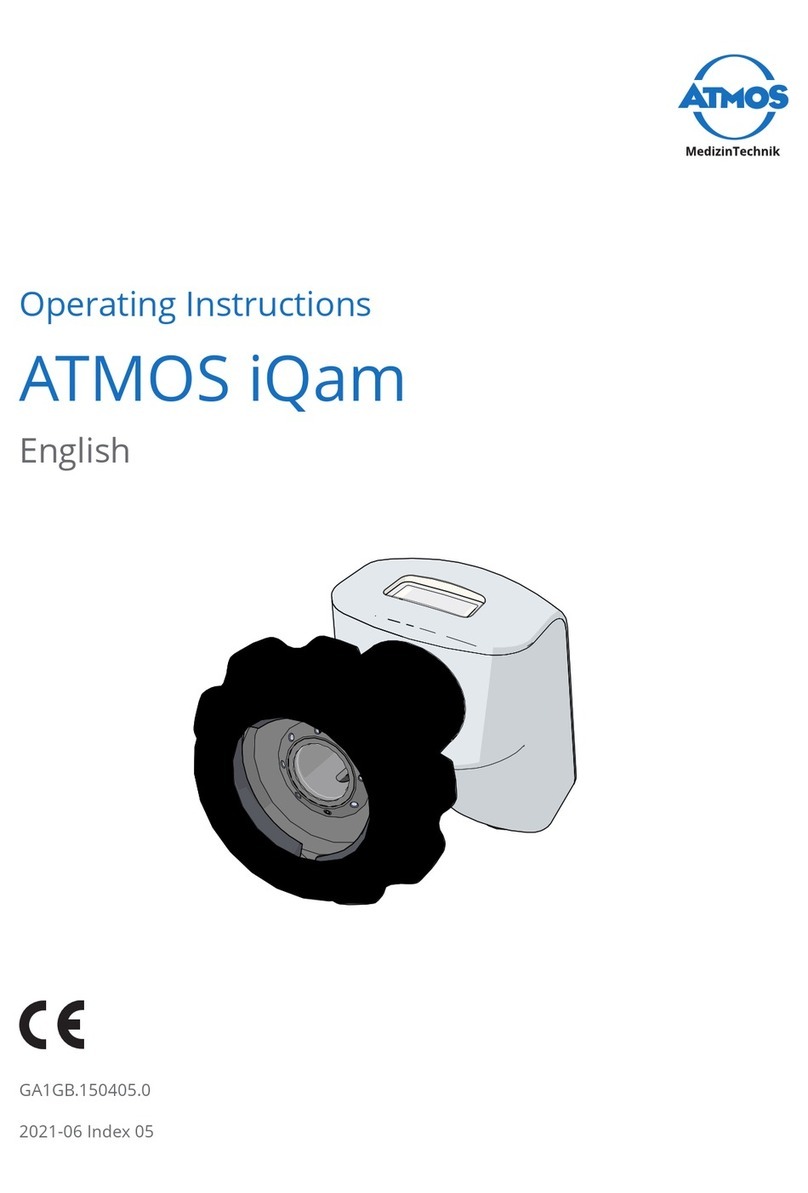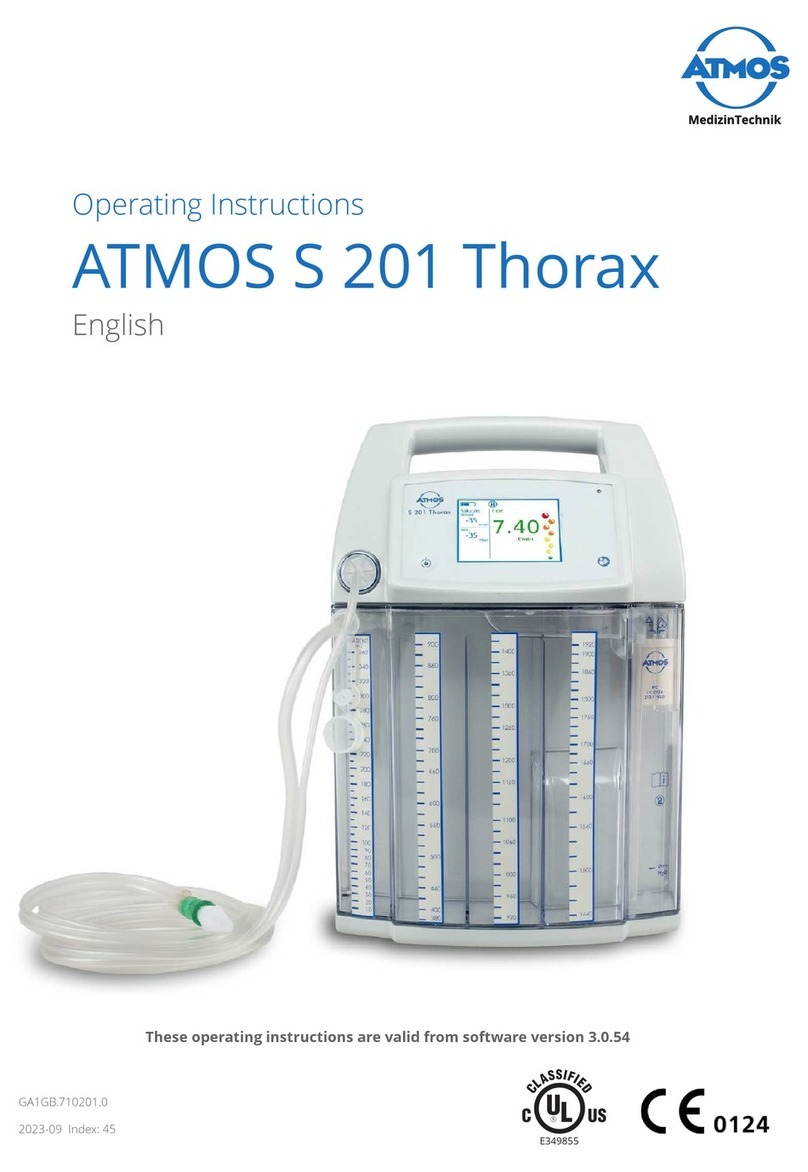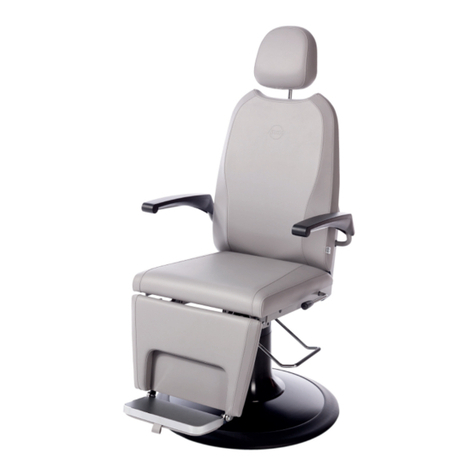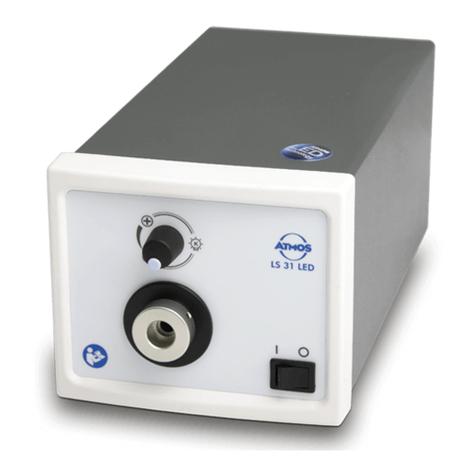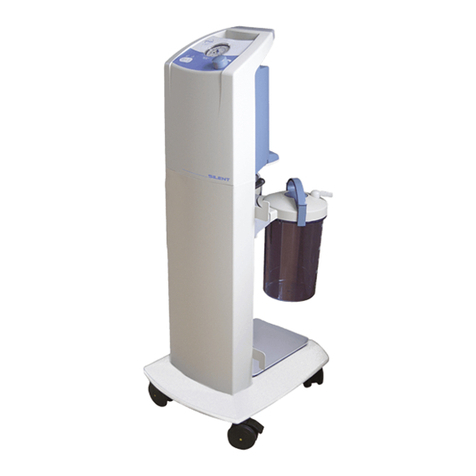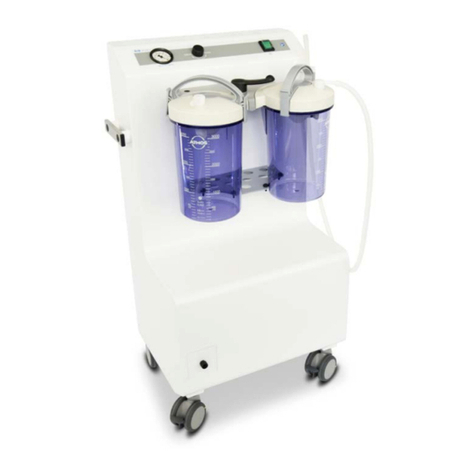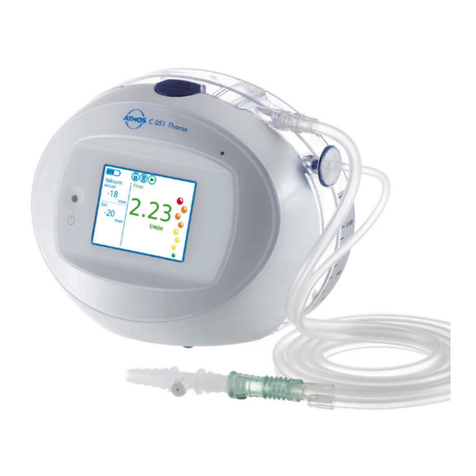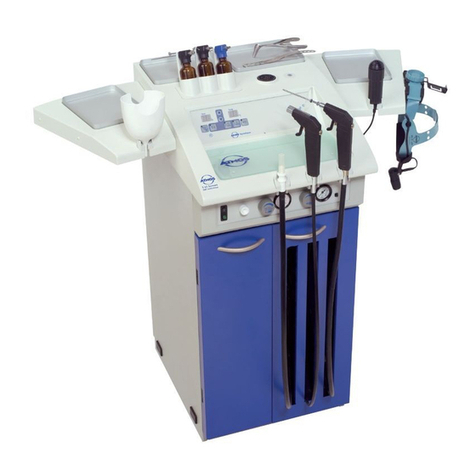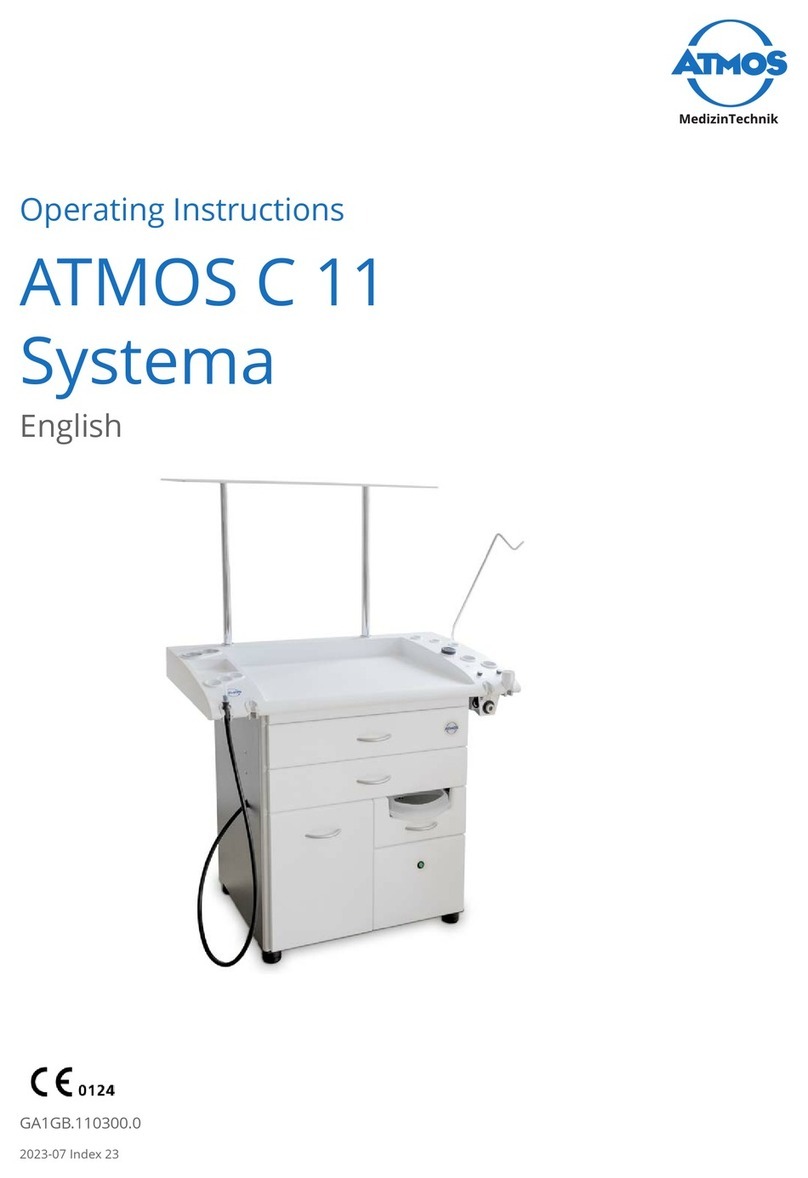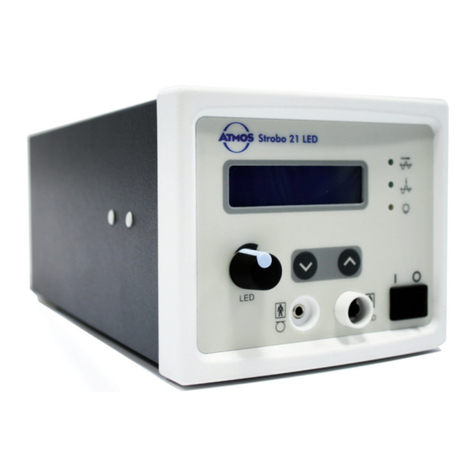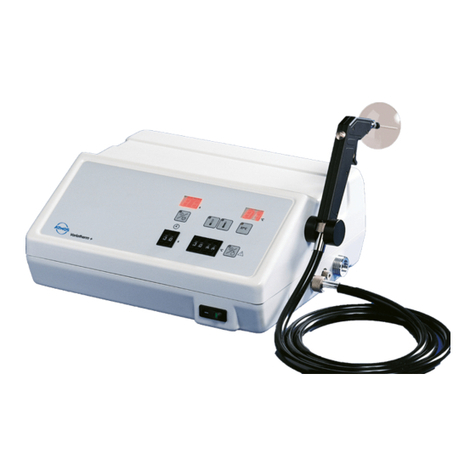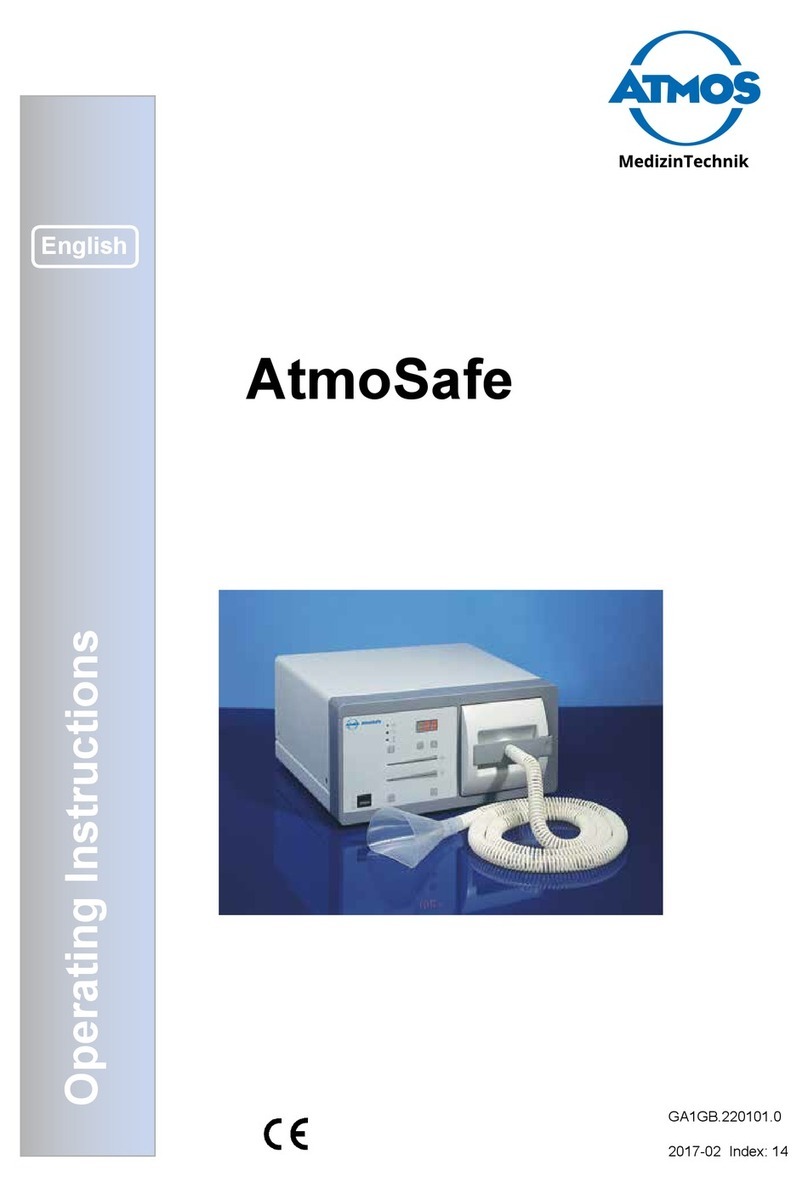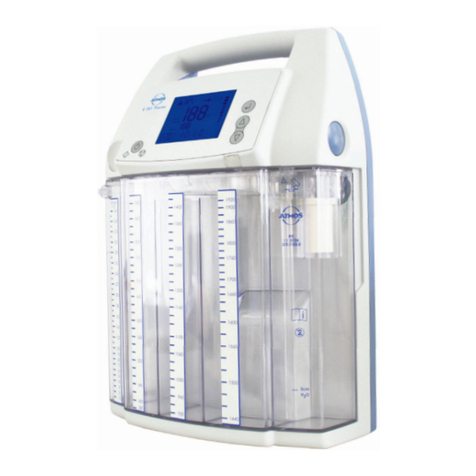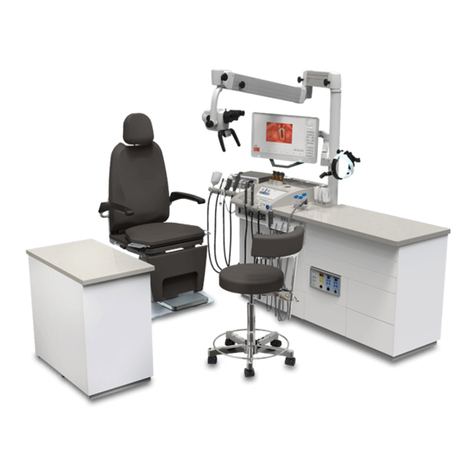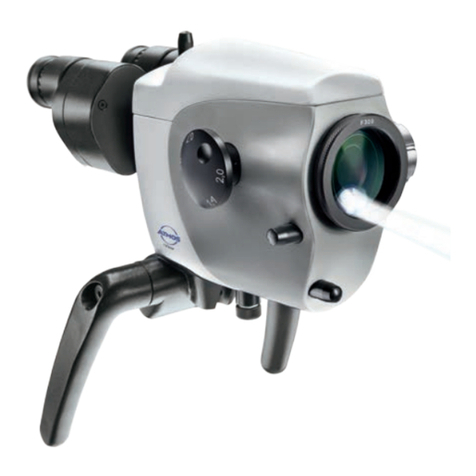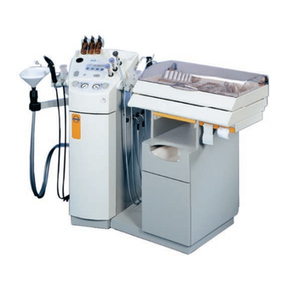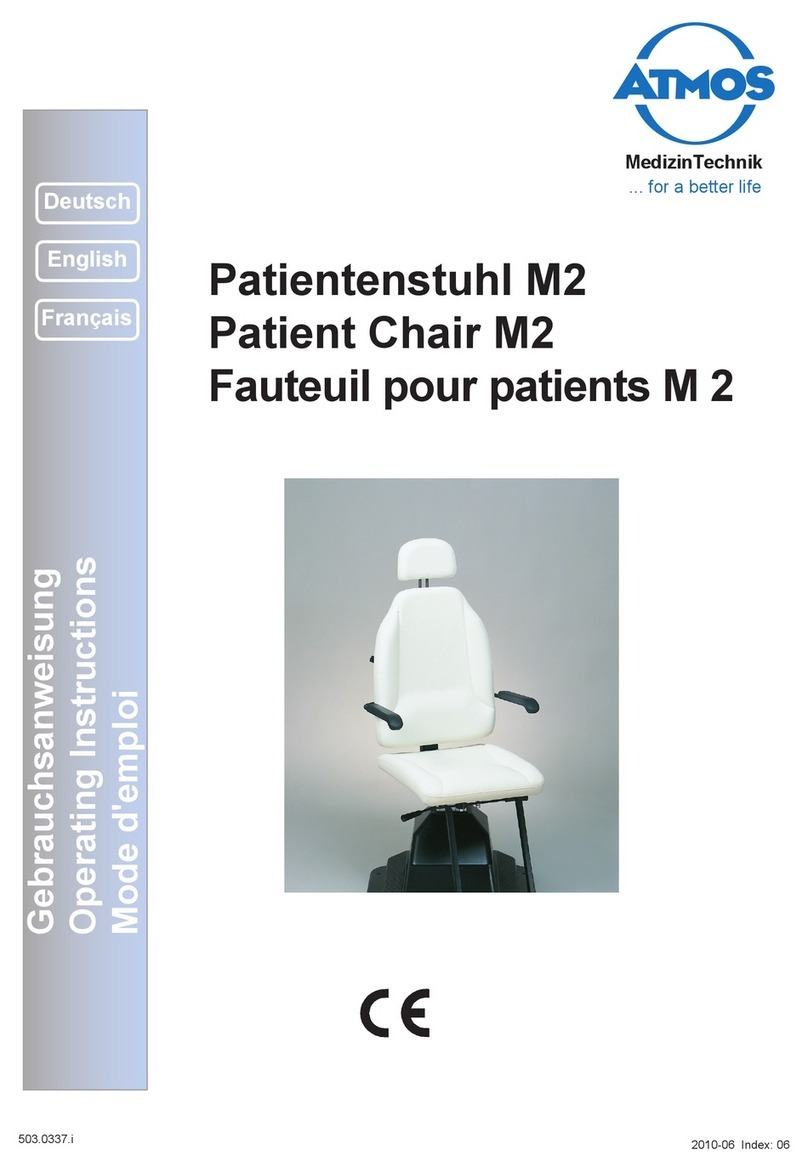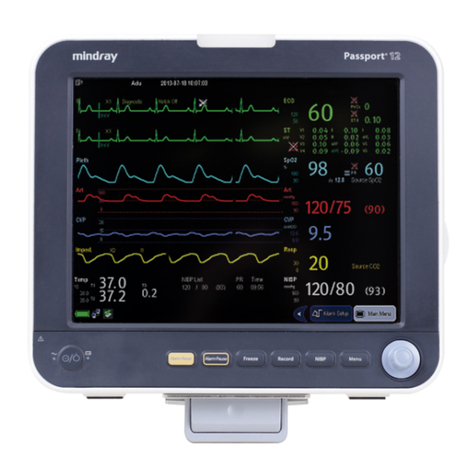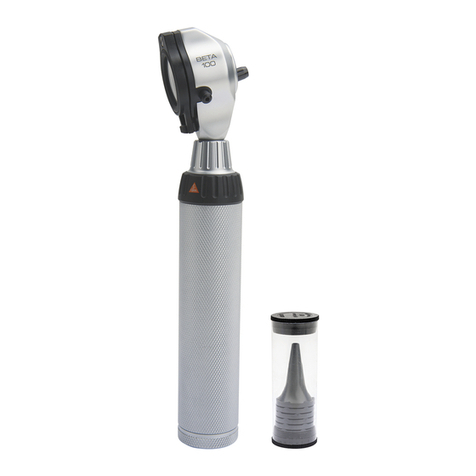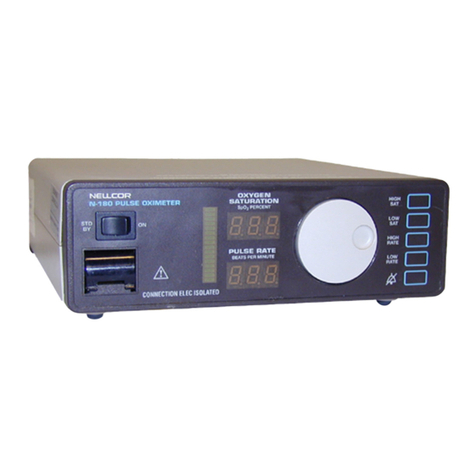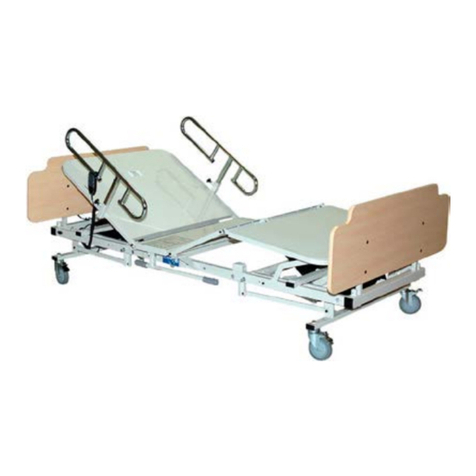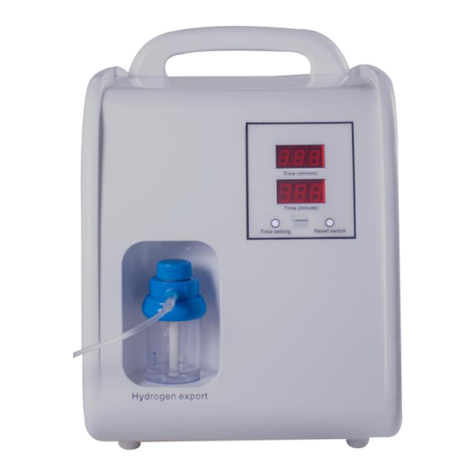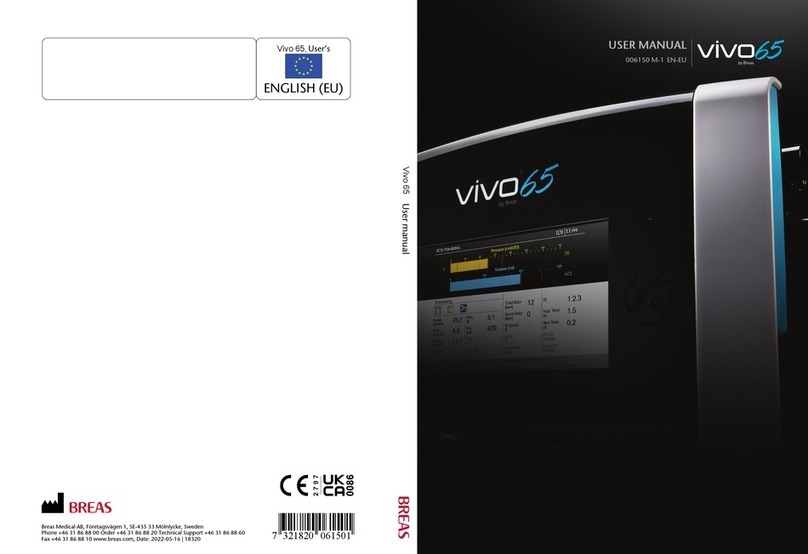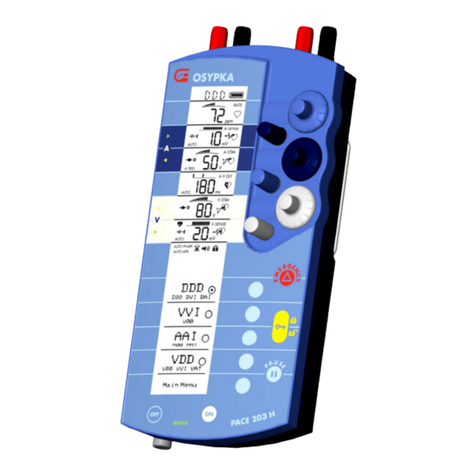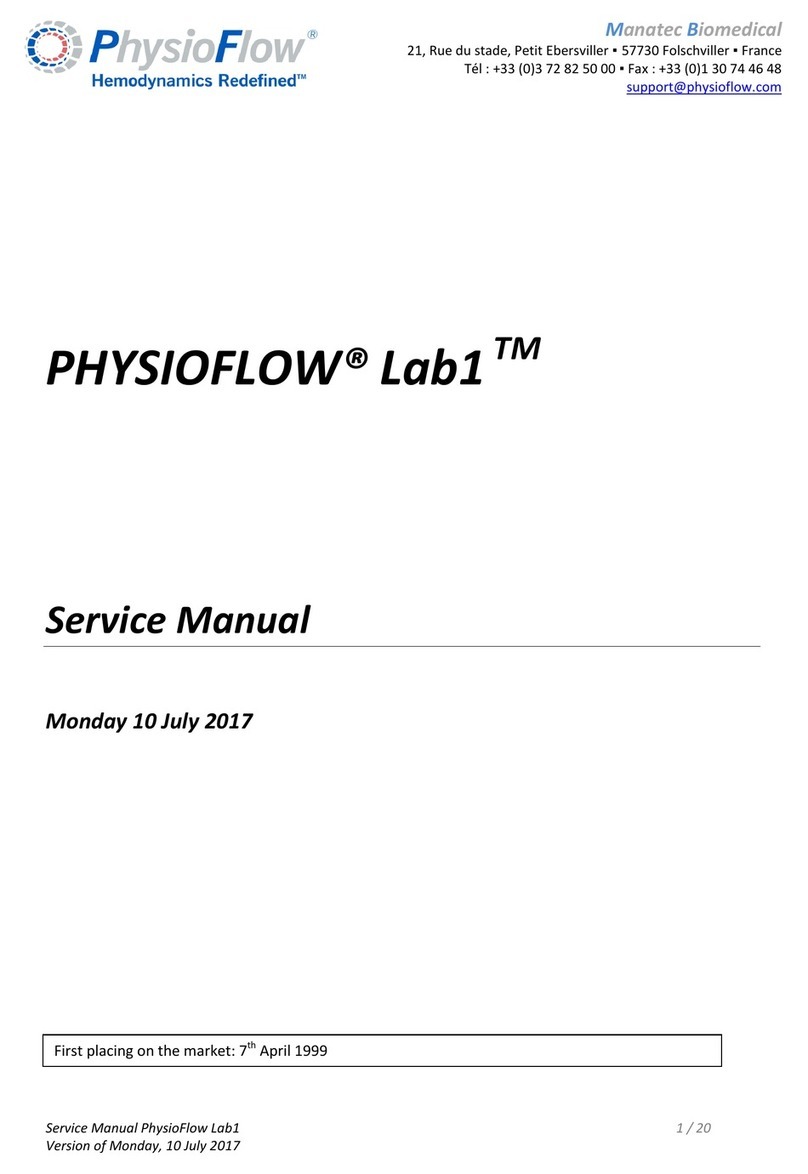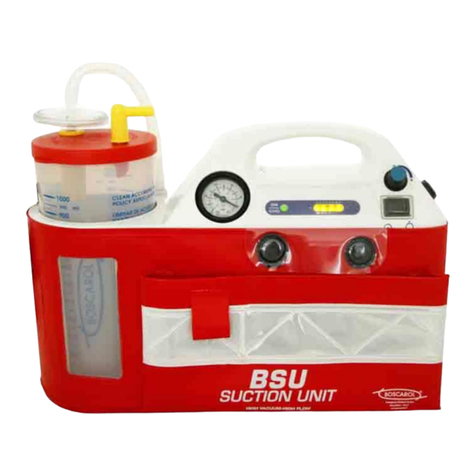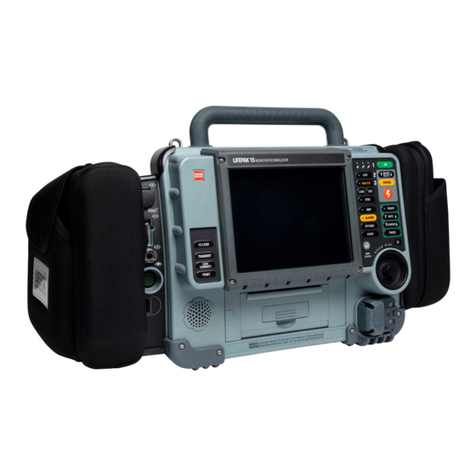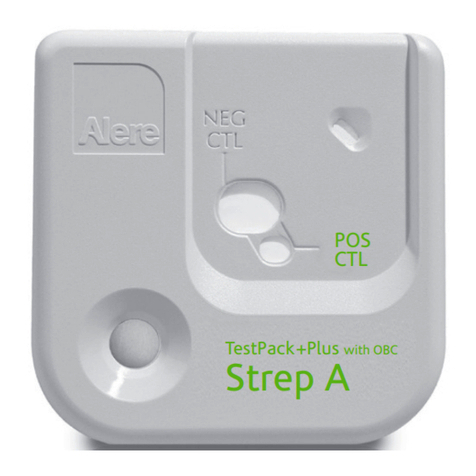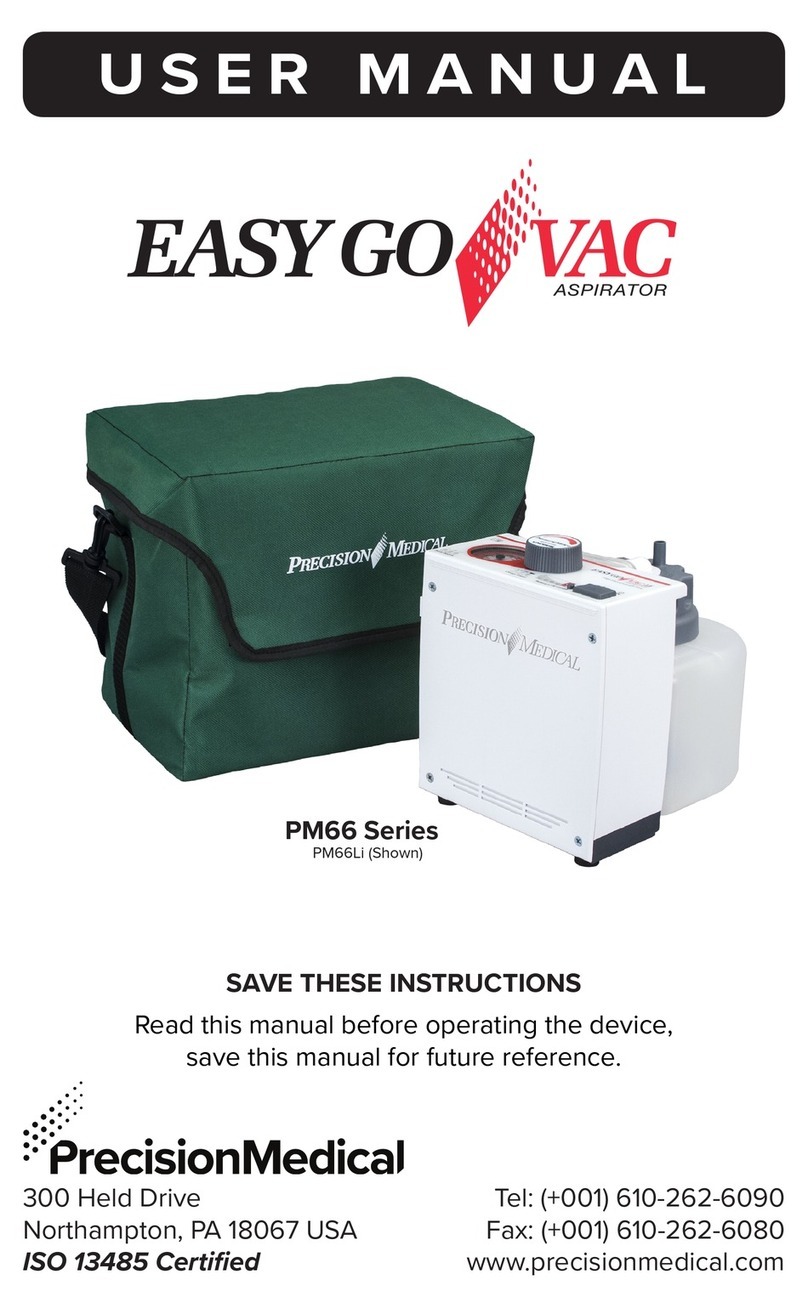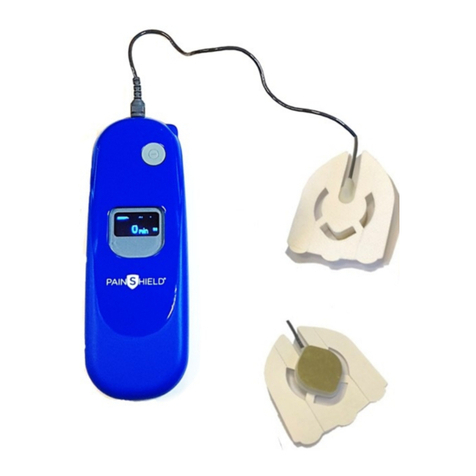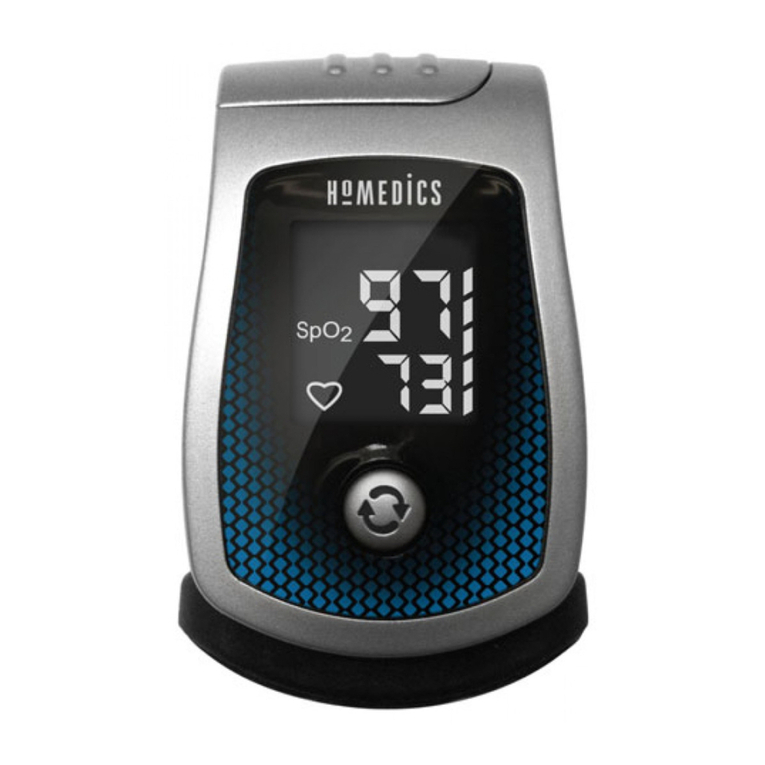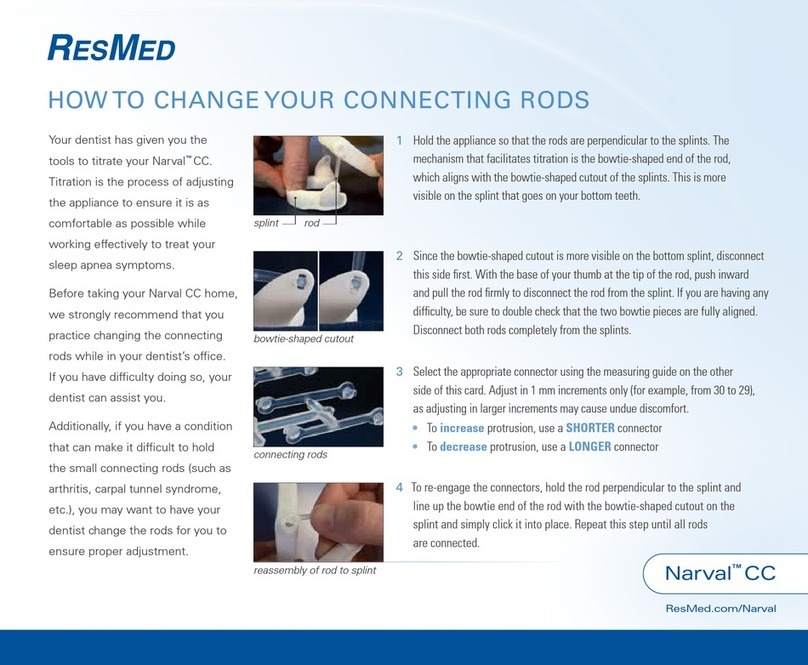6
Please dispose properly all packaging.
The doctor treating the patient is responsible for the proper
surgical procedures and technology. A trained doctor has to
decide in each case whether the treatment is appropriate
and how to carry it out.
The ATMOS® S 351/S 351 Natal/S 351 Ophthal may be
used only by trained staff under supervision (IEC 601-1 /
EN 60601-1).
The ATMOS® S 351/S 351 Natal/S 351 Ophthal meets the
requirements of the standard IEC 601-1-2 / EN 60601-1-2
„Electromagnetic compatibility – medical electrical equip-
ment“ with regard to resistance to interference.
Always set up the equipment in such a way that the operator
can easily see the front panel and can reach it comfortably.
The equipment must be placed on a fi rm, level surface.
The ATMOS® S 351/S 351 Natal/S 351 Ophthal has been
designed in accordance with IEC 601/ EN 60601. The
equipment conforms to VDE Safety Class I. It must only
be connected to a properly installed earthed socket.
Before connecting the equipment, check that the values
for voltage and frequency indicated on the equipment
correspond to those of the mains supply.
Use only correctly installed mains sockets and extension
cables.
Check equipment, secretion canister, power cable, acces-
sories, connection cables and hoses for damage before
start-up. Damaged cables and hoses must be replaced
immediately. Check before use that the unit functions
properly.
To disconnect the equipment from the mains, always pull
the plug out of the wall socket fi rst. Only then disconnect
the cable from the unit. Never touch plug or cable with wet
hands.
After transport at low temperatures, the equipment must
be left at room temperature for up to six hours before initial
start-up. If the equipment has not been acclimatised, it must
not be operated as the diaphragms of the pump could be
damaged.
When switching on the unit, a high vacuum value might be
present.
The suction hose must never come into direct contact
with the patient. A suction catheter, suction attachment or
medical suction instruments must always be used.
Too high vacuum values may lead to tissue damages.
Only use transparent hoses.
The environmental conditions listed in the specifi cations
(chapter 10.0) must be observed.
Please note:
A medical insulating transformer with earth leakage
monitor or any similar safety system acc. to EN 60 601-1 is
required, if several devices are connected over one com-
mon power supply. The transformer must correspond to the
power consumption of all the devices to be connected.
The ATMOS® S 351 must only be operated in rooms
designated for medical use. It is not designed for use in
potentially explosive areas (M and G)and in oxygen rich
enviroNments. Potentially explosive areas can arise from
use of fl ammable anaesthetic agents and agents used for
cleaning and disinfecting skin.
The footswitch is suitable for use in the above applications.
If demineralised/slightly mineralised water or tap water is
sucked off, the overfl ow monitor of the ATMOS® S 351 does
not function reliably as it works on an electrical basis.
Do not allow liquid to enter the equipment. If liquid has
entered the equipment, it must be inspected by a service
engineer before further operation.
When using on a patient (e.g. during surgery or lipectomy),
an additional equivalent unit should be ready in case of
failure of the unit (backup suction unit).
The level of vacuum preselected and the selection of addi-
tional products must be as instructed by the specialist for
all applications on a patient, e.g. for vacuum extraction,
drainage of wounds or ophthalmologic surgery.
These operating instructions correspond to the design of
the equipment and the latest version of the safety standards
at the time of printing. All property rights are reserved for
the circuits, processes, names, software programs and
equipment listed.
Particularly important notes are placed in a frame in these
instructions.
The software detects a full secretion canister or „shorting
between the contact terminals“ and issues a warning at
regular intervals. This does not interrupt the process of
vacuum extraction.
Prior to the wound drainage treatment, check the suction
unit for correct function.
Wound drainage may only be effected under medical su-
pervision.
When using the equipment to drain a wound, the user (doc-
tor, nursing staff) must continuously monitor the patient’s
fl uid and electrolyte balance. It is recommended to specify
the secretion canister volume on the basis of the medical
assessment to prevent excessive removal of fl uids in case
of insuffi cient monitoring. This can be implemented by
selecting an appropriate secretion canister or limiting the
maximum secretion canister level.
The maximum level can be restricted by, for example, top-
ping up the secretion canister with sterile water. For this,
the secretion canister is fi lled with the difference in volume
between secretion canister volume and required drainage
volume before start of treatment.
Once the quantity is reached, the unit automatically switches
off via the level monitor. Check before use on the patient
that the level monitor functions properly.
2.0 Safety Information




















